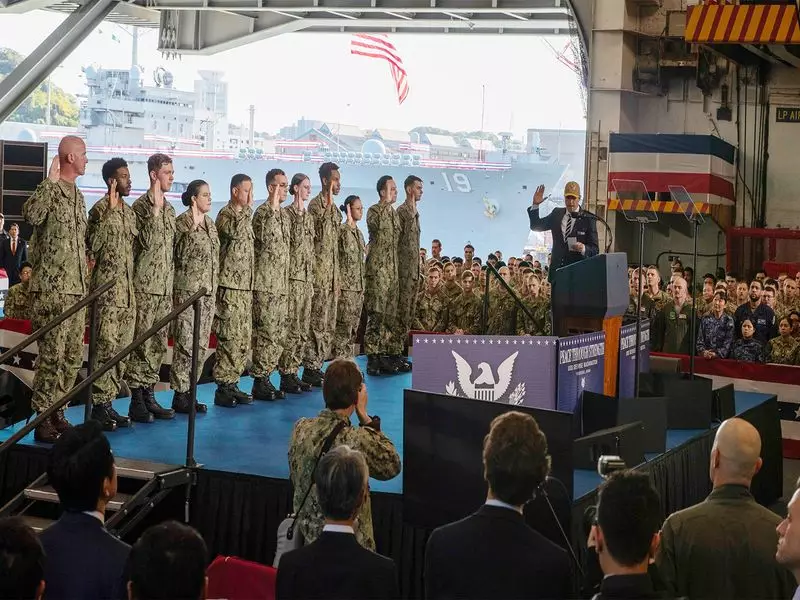
In a powerful demonstration of military solidarity, the United States Navy's nuclear-powered aircraft carrier, USS Theodore Roosevelt, has made a strategic port call at Busan, South Korea. This significant deployment comes at a crucial time when regional security concerns are mounting due to North Korea's recent provocative actions.
Strategic Arrival Amid Rising Tensions
The massive warship, accompanied by its strike group, docked at South Korea's primary naval base in Busan on Tuesday, marking one of the most substantial US military presence displays in the region this year. The timing of this deployment is particularly noteworthy, occurring just days after North Korea conducted another round of ballistic missile tests, further escalating tensions on the Korean Peninsula.
Strengthening the US-South Korea Alliance
This port visit represents more than just routine military operations—it serves as a tangible manifestation of the ironclad alliance between Washington and Seoul. Military officials from both nations emphasize that this deployment reinforces their shared commitment to regional stability and demonstrates their combined readiness to respond to any potential threats.
The arrival of the USS Theodore Roosevelt, one of America's most advanced Nimitz-class aircraft carriers, sends a clear message about the United States' dedication to maintaining security in the Indo-Pacific region. With a crew of nearly 5,000 sailors and the capability to carry approximately 90 aircraft, this floating military base represents unprecedented firepower and strategic advantage.
Regional Security Implications
Military analysts suggest this deployment serves multiple strategic purposes:
- Deterrence against North Korean aggression
- Enhanced interoperability between US and South Korean forces
- Demonstration of rapid response capabilities
- Reassurance to regional allies
South Korean defense officials have welcomed the carrier's arrival, noting that such visible displays of military cooperation are essential for maintaining peace and stability in the region. The deployment occurs as both nations continue to enhance their combined military exercises and intelligence-sharing mechanisms.
What's Next for the Carrier Strike Group?
Following its port call in Busan, the USS Theodore Roosevelt and its accompanying vessels are expected to participate in joint naval exercises with South Korean forces. These drills will focus on improving coordination, testing communication systems, and practicing various combat scenarios that might arise in the region.
This deployment aligns with the broader US strategy of maintaining a persistent presence in the Indo-Pacific, ensuring freedom of navigation, and countering potential threats to regional stability. As geopolitical tensions continue to evolve, such strategic military movements remain critical components of international security dynamics.





